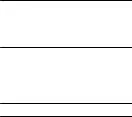The IRS Form 940, "Employer's Annual Federal Unemployment (FUTA) Tax Return," is closely related to IRS Pub 1141 in its function of addressing employer tax responsibilities. Both forms are integral to how businesses report and manage taxes related to employee compensation. Form 940 specifically deals with unemployment tax obligations of employers at the federal level, emphasizing similar adherence to guidelines and deadlines, akin to the W-2 and W-3 reporting requirements outlined in IRS Pub 1141.
IRS Form 941, "Employer's Quarterly Federal Tax Return," shares a direct link with the processes described in IRS Pub 1141, as it involves periodic reporting of employees' earnings and withholdings. This form is another vehicle through which employers fulfill their tax reporting duties concerning employee compensation, very much in the spirit of maintaining regular and accurate tax records, a foundational aspect underscored in the guidelines for substitute forms W-2 and W-3.
IRS Form 944, "Employer’s Annual Federal Tax Return," is designed for smaller employers to report employees' wages, withheld income, and social security and Medicare taxes, showcasing a similarity to IRS Pub 1141’s themes of tax responsibility and reporting. Like the substitute forms W-2 and W-3, Form 944 allows for an annual summation, albeit in a different context, underlining the overarching IRS goal of streamlined, compliant tax reporting from employers.
The IRS Form W-4, "Employee's Withholding Certificate," indirectly supports the objectives of IRS Pub 1141 by determining the amount of taxes to withhold from employees' paychecks. It precedes the need for Forms W-2 and W-3, setting the stage for accurate tax withholding and reporting, illustrating the interconnectedness of IRS documents in managing tax obligations.
IRS Form W-9, "Request for Taxpayer Identification Number and Certification," while primarily used for independent contractors, aligns with IRS Pub 1141 in its pursuit of tax compliance and proper documentation. Though focusing on a different segment of workforce taxation, the principle of ensuring accurate tax reporting through required forms unites these IRS documents.
IRS Publication 15 (Circular E), "Employer's Tax Guide," offers a comprehensive overview of an employer's tax duties, closely matching the educational and directive nature of IRS Pub 1141. This publication provides detailed instructions on all aspects of withholding, reporting, and paying federal taxes, echoing the procedural guidance found in IRS Pub 1141 for substitute forms W-2 and W-3.
IRS Form 1099-NEC, "Nonemployee Compensation," is part of the family of forms addressing the reporting of different types of payments, akin to how IRS Pub 1141 manages employee compensation reporting. Though most often used for freelance or contract work, its role in the larger ecosystem of tax documentation highlights similar goals of clarity, accuracy, and compliance in tax matters.
The IRS Publication 1223, "General Rules and Specifications for Substitute Forms W-2c and W-3c," parallels IRS Pub 1141 in its focus on substitute forms, providing guidelines for correcting previously filed Forms W-2 and W-3. This publication illustrates the continuum of tax reporting, where ensuring the ongoing accuracy of records, through corrected forms when necessary, is paramount.
IRS Form 1096, "Annual Summary and Transmittal of U.S. Information Returns," functions as a cover sheet for submitting certain types of forms, reflecting the broader organizational aspects inherent in IRS Pub 1141’s guidelines for electronic and paper filing. Though serving a different subset of tax documents, Form 1096 embodies the procedural and transmittal aspects emphasized in the preparation and submission of substitute forms W-2 and W-3.



 IRS
IRS






